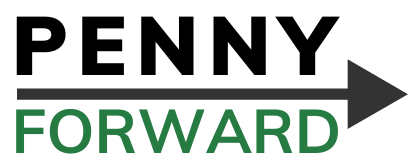The following blog post was written by Penny Forward founder Chris Peterson and originally published by the ABLE National Resource Center. Click here to read the original post.
As I was transitioning from high school to college in 1996, my parents and teachers strongly advised me to apply for Supplemental Security Income, or SSI, to help me bring in cash to live on while I was in college and looking for work. As a blind person, the application process was very simple and everybody believed that I’d easily be approved. They were right.
There were rules I needed to know, though, so I read “The Red Book,” a guide to employment supports published by the Social Security Administration (SSA). This guide is available online and pretty easy to read, but the rules are complicated enough that most readers still have questions or make mistakes that result in under or over payments while they’re collecting benefits. The rule that stood out to me, though, was that I couldn’t keep much money in my bank account or I’d lose my benefits. I also knew that I’d get a smaller monthly payment f I started making money by working.
After I applied for SSI, and shortly before I graduated high school, my dream job became available and I jumped at the chance to apply. I was hired and began receiving my SSI and work paychecks at around the same time, so I quickly learned how to report my income and live on SSI and my earned income. I was even able to save a small amount of money for my future, but I didn’t because I was too afraid of losing my SSI benefits. Transition-age students today have access to something I didn’t – ABLE accounts.
ABLE accounts are special savings and investment accounts that allow people who are receiving SSI, or other means-tested benefits, to save up to $100,000 without losing their paychecks. They’re super easy to open and use and they even make it easy for your friends and family to give you money without fear of impacting your benefit checks. The ABLE National Resource Center (ABLE NRC) website explains all of the advantages of ABLE accounts, so I won’t go into them here, but I do want to focus on one advantage that ABLE NRC tells me isn’t used very often; ABLE accounts allow you to invest your money so it’ll grow more quickly than it might in a traditional savings account. Being disabled is expensive and investing is the best way I know of to build wealth.
To many people, investing can seem complicated and scary. While it’s true that there are risks, I’ll explain why I believe almost anyone can earn money by investing and what it’s been like for me to invest using my ABLE account.
According to Investopedia, “Investing is the act of allocating resources, usually money, with the expectation of generating an income or profit.” In other words, when you invest money, you expect to make more money.
When you start learning about investing, you quickly realize that you need to make a lot of choices and it’s not at all clear how to choose safely. My ABLE account offers me just a few investment choices ranging from conservative to aggressive. For some very detail-oriented investors, this may not offer enough control. For me, though, this makes it easy to choose when I’ve decided how much risk I can accept and my investment goal.
Investment Risk
I think of investment risk as a possibility that I’ll lose money on my investment. My ABLE account’s investments are organized from lowest risk, conservative, to highest risk, aggressive. I’m willing to accept a high risk because I won’t need to access the money in my ABLE account for a long time and I generally don’t worry when my balance goes down. If you’re a worrier though, or if you know you’ll need to access your money soon, then a more conservative option may be more appropriate for you.
Investment Goal
Everyone invests to make money, but you can make money from your investments in two ways. The various conservative income options, for example, make regular interest or dividend payments to my ABLE account, usually every three months. Payments from income investments aren’t large, but they do tend to be dependable, so many people prefer them if they know they’ll need to spend money from their ABLE account soon. Learn more about income investing.
More aggressive investors hope to buy shares of stock in companies they believe will become more valuable over time. I don’t have the option to invest in individual company stocks in my ABLE account, though. I can, however, choose a moderately aggressive or aggressive growth option that invests in hundreds of companies experts believe will continue to grow for a long time. Learn more about growth investing.
Conclusion
If you’re willing and able to accept the risks, investing using your ABLE account can be a powerful tool for building wealth. ABLE programs have worked hard to create investment choices that I believe are easy to use and safe enough for almost anyone. I hope you’ll take the time to investigate the investment options in your ABLE account and learn how they can help you to achieve your goals.

Leave a Reply